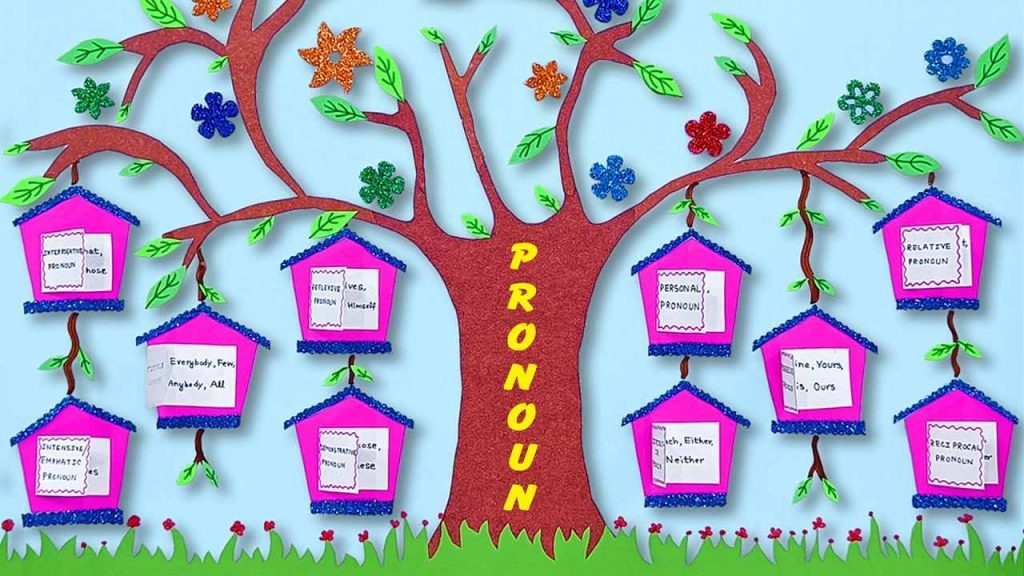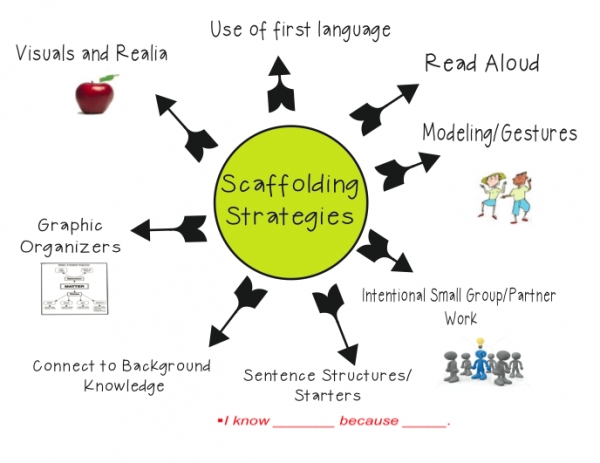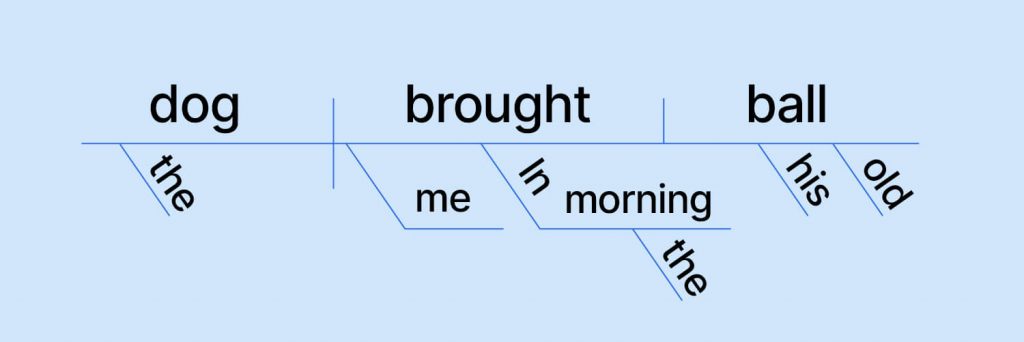- 1. Immediate Correction with Explanation
- 2. Use of Visual Grammar Charts
- 3. Grammar Modeling through Storytelling
- 4. Reinforcement through Worksheets
- 5. Interactive Grammar Journaling
- 6. Scaffolded Grammar Exercises
- 7. Sentence Diagramming
- 8. Immediate Application in Writing
- 9. Peer Teaching
- 10. Daily Grammar Challenges
Are your students often confused by English grammar rules despite your best efforts? Teaching English grammar to young learners can feel overwhelming when they struggle to understand concepts like tenses or sentence structure. To overcome these challenges, it’s essential to use strategies that simplify grammar and make it more relatable for kids.
Math & ELA | PreK To Grade 5
Kids see fun.
You see real learning outcomes.
Watch your kids fall in love with math & reading through our scientifically designed curriculum.
Parents, try for free Teachers, use for free
In this blog, we’ll explore 12 practical approaches to help you turn these tricky grammar lessons into engaging and effective learning experiences.
1. Immediate Correction with Explanation
Immediate correction with explanation involves addressing a student’s grammatical mistake as soon as it happens and briefly explaining why it’s incorrect. This method is vital because it helps students immediately understand the correct rule, reinforcing their learning in real-time.
How can I implement this strategy in the classroom?
When a student makes a grammar mistake, correct it immediately with a clear, concise explanation. For example, if a student says, “He go to the park,” you can respond with, “Remember, we say ‘he goes’ because ‘he’ is singular, and we add ‘s’ for verbs in the present tense with ‘he,’ ‘she,’ or ‘it’.”
How can this benefit the students?
By correcting errors immediately, you prevent the mistake from becoming a habit. This approach also helps students connect the rules and their everyday language use, making the grammar more relevant and accessible. Over time, students will begin to self-correct, leading to more accurate and confident language use.
2. Use of Visual Grammar Charts

Visual grammar charts are tools that display key grammar rules, such as verb tenses, parts of speech, or sentence structures, in a clear and accessible way. These charts serve as constant visual reminders for students, helping them internalize rules by seeing them regularly during lessons.
How can I implement this strategy in the classroom?
Create or use pre-made grammar charts that highlight the rules you are teaching. Hang these charts in visible areas of your classroom, such as near the whiteboard or students’ desks. Refer to them frequently during lessons—pointing to the relevant chart when discussing a rule helps reinforce the concept.
For example, when teaching verb tenses, use a chart that shows the different forms (past, present, future) with example sentences.
How can this benefit the students?
Visual aids make abstract grammar rules more concrete and easier for young learners to understand. Having these charts readily available in the classroom allows students to reference them independently, encouraging self-guided learning. Over time, students will associate the visual representations with the rules, aiding in quicker recall during speaking and writing activities.
3. Grammar Modeling through Storytelling
Grammar modeling through storytelling involves using stories, whether read aloud or created in class, to demonstrate correct grammar usage in a natural context. This method helps students see how grammar rules work within sentences and narratives, making abstract rules more relatable and easier to understand.
How can I implement this strategy in the classroom?
During your reading sessions or telling a story, emphasize key grammar structures by reading slowly and clearly. After the story, discuss specific sentences, highlighting the grammar rules used. For example, after reading a sentence like, “The dog runs quickly,” you might point out the use of the present tense and how the adverb “quickly” describes the verb “runs.”
You can also create stories together as a class, intentionally using the grammar rules you teach, and then review the story to discuss these rules.
How can this benefit the students?
Storytelling provides a meaningful context for grammar rules, making them easier for students to grasp and remember. By hearing and seeing correct grammar in use, students can better understand how to apply the rules in their own writing and speech. This method also makes grammar lessons more engaging, as students are naturally interested in stories, which helps maintain their focus and interest in the topic.
Related Reading: Best Storytelling Activities for Kids
4. Reinforcement through Worksheets
Reinforcement is a crucial part of mastering grammar, and worksheets effectively consolidate what students have learned. Students can practice specific grammar rules by completing targeted exercises, ensuring they understand and apply them correctly.
How can I implement this strategy in the classroom?
After teaching a grammar rule, provide students with worksheets focusing on that specific concept. These worksheets can include a variety of exercises, such as sentence correction, fill-in-the-blank, and sentence creation tasks.
For instance, if you’ve taught the past tense, the worksheet might include sentences where students need to convert present-tense verbs to past tense. Worksheets can be used as homework, classwork, or a quick review activity. Review completed worksheets with the class, discussing common mistakes and reinforcing the correct rules. Here are some fun grammar worksheets to get started:
Begin here
How can this benefit the students?
Worksheets offer structured practice that helps reinforce grammar rules by requiring students to apply what they’ve learned in multiple contexts. They allow students to work independently, giving them time to think through each question and solidify their understanding.
Additionally, worksheets provide teachers with a clear way to assess student progress and identify areas needing further review, ensuring that students gain confidence and competence in their grammar skills.
5. Interactive Grammar Journaling
Interactive grammar journaling involves having students keep a journal where they write regularly, focusing on specific grammar rules. This method encourages students to apply what they’ve learned personally and reflectively, allowing for ongoing practice and self-assessment.
How can I implement this strategy in the classroom?
Ask students to write a few sentences or short paragraphs in their journals each day, focusing on a grammar rule you’ve recently taught.
For example, if you’ve been working on past tense verbs, instruct them to write about something they did the previous day. At the end of the week, review the journal entries with the students, guiding them to identify and correct any grammar mistakes related to that week’s focus. Encourage them to self-correct as much as possible, offering guidance where needed.
How can this benefit the students?
Interactive grammar journaling helps students consistently practice grammar in a low-pressure setting, reinforcing their learning over time. It also allows for personalized learning, as students can focus on their unique areas of difficulty. By regularly reviewing their writing, students become more aware of their mistakes and more confident in correcting them, leading to improved grammar skills in both writing and speaking.
Related Reading: Ways to Improve Writing Skills
6. Scaffolded Grammar Exercises

When teaching English grammar, use Scaffolded grammar exercises. It involves breaking down grammar instruction into small, manageable steps, gradually increasing the complexity as students gain confidence and understanding. This method supports students by providing a clear and structured path from simple to more advanced grammar concepts.
How can I implement this strategy in the classroom?
Start with simple sentences focusing on one grammar rule at a time. For example, when teaching subject-verb agreement, begin with sentences like “The cat runs.” Once students are comfortable, gradually introduce more complex sentences, such as “The cats run quickly,” and eventually move to compound sentences like “The cat runs, and the dog barks.” Always ensure students have mastered the simpler forms before moving on to more complex structures.
How can this benefit the students?
Scaffolded exercises allow students to build their understanding gradually, reducing the likelihood of confusion and frustration. By mastering one level of complexity before advancing to the next, students develop a solid foundation in grammar that they can rely on as they encounter more challenging concepts. This approach also helps cater to different learning paces, ensuring all students progress confidently.
7. Sentence Diagramming

Sentence diagramming is a visual method of breaking down and analyzing the structure of a sentence. It helps students see the relationships between different parts of speech, making abstract grammar rules more concrete and understandable.
How can I implement this strategy in the classroom?
Start with simple sentences and show students how to draw diagrams that separate the subject, verb, and object. For example, with the sentence “The dog runs,” you would draw a line dividing the subject “The dog” and the verb “runs.” Gradually introduce more complex sentences, adding modifiers, conjunctions, and compound elements to the diagrams. Encourage students to practice by diagramming sentences from their reading materials or their own writing.
How can this benefit the students?
Sentence diagramming helps students visually understand the structure of a sentence, which can clarify how different grammar rules fit together. This method also reinforces the idea that sentences are made up of distinct parts that work together, aiding in the comprehension and application of grammar rules.
As students become more skilled at diagramming, they gain a deeper understanding of sentence construction, which can improve both their writing and analytical skills.
Related Reading: How To Make Simple Sentences For Kids
8. Immediate Application in Writing
Immediate application in writing involves having students use a newly learned grammar rule in their writing right after it’s been taught. This strategy reinforces the rule by putting it into practice immediately, helping students internalize the concept more effectively.
How can I implement this strategy in the classroom?
After teaching a specific grammar rule, give students a short writing task where they must use that rule. For example, if you’ve just taught about the use of conjunctions, ask students to write a few sentences or a short paragraph that includes conjunctions like “and,” “but,” or “because.” Review their writing as soon as they finish, providing quick feedback to correct any errors and reinforce correct usage.
How can this benefit the students?
By applying grammar rules immediately in their writing, students are more likely to retain what they’ve learned. This approach bridges the gap between theory and practice, ensuring that students can use grammar rules effectively in real-world writing tasks. Additionally, immediate feedback helps correct mistakes before they become ingrained, leading to better long-term grammar skills.
9. Peer Teaching
Peer teaching involves pairing students to teach each other grammar rules. This method reinforces learning because teaching a concept requires a deep understanding of it, and students often benefit from explaining ideas in their own words.
How can I implement this strategy in the classroom?
After teaching a new grammar rule, pair students and assign them to explain the rule to each other. You can also ask them to create sentences together that demonstrate the rule or correct each other’s work. For example, after a lesson on subject-verb agreement, one student might explain the rule while the other listens and then they both create sentences that follow the rule. Monitor their discussions to provide support and correct any misunderstandings.
How can this benefit the students?
Peer teaching encourages students to take an active role in their learning, which can boost their confidence and reinforce their understanding of grammar rules. It also allows students to learn from each other in a more relaxed and collaborative environment. This method often leads to stronger retention, as students are more likely to remember a rule they’ve had to teach or discuss with a peer.
10. Daily Grammar Challenges
Daily grammar challenges are short, focused activities that give students the opportunity to practice a specific grammar rule each day. These challenges keep grammar practice consistent and varied, helping to reinforce rules through regular, bite-sized tasks.
How can I implement this strategy in the classroom?
Create a daily routine where you present students with a grammar challenge at the start or end of each class. This could be a sentence that needs correcting, a fill-in-the-blank exercise, or a prompt to create a sentence using a specific grammar rule. For example, one day’s challenge might be, “Correct this sentence: She doesn’t like carrots.” Keep the challenges short and focused on just one rule at a time to ensure clarity and prevent overwhelm.
Here are some fun grammar worksheets that you can assign the class as part of their daily grammar challenge:
Begin here
How can this benefit the students?
Daily grammar challenges provide ongoing practice, helping students to reinforce their learning in a manageable and consistent way. These challenges also allow you to assess students’ understanding regularly and address any recurring issues promptly. Over time, this consistent practice helps to build students’ confidence and competence in using grammar correctly in both speaking and writing.
11. Order of Teaching Grammar to ESL Beginners
When teaching grammar to ESL students, it’s important to introduce concepts logically and gradually. Starting with the basics and slowly building up to more complex rules helps prevent confusion and ensures a solid foundation in the language.
How can I implement this strategy in the classroom?
Begin with simple and essential grammar concepts, such as basic sentence structure (subject-verb-object) and the use of the present tense. Once students are comfortable with these, gradually introduce other tenses, basic pronouns, and question formation. As students progress, incorporate more complex structures like compound sentences, adjectives, adverbs, and eventually, conditional sentences.
Always ensure students have mastered one concept before moving on to the next, using plenty of examples and practice exercises to reinforce each new rule.
How can this benefit the students?
Following a structured order when teaching English grammar to ESL beginners ensures that students build their understanding step by step, reducing the risk of confusion. This approach helps them gain confidence as they gradually expand their grammar knowledge, making it easier for them to understand and use English in everyday situations. By laying a strong foundation, students are better prepared to tackle more advanced grammar concepts as they continue learning.
12. Repetition with Variability
Repetition with variability involves practicing a grammar rule repeatedly but in different contexts and sentence structures. This approach helps reinforce the rule while also showing students how it applies across various situations, preventing rote memorization and promoting true understanding.
How can I implement this strategy in the classroom?
Introduce a grammar rule and create multiple examples that use different subjects, verbs, and objects while still applying the same rule. For instance, if teaching the past tense, start with simple sentences like “She walked to school,” and then vary the sentence structure: “The children played in the park,” or “The teacher talked to the parents.”
Encourage students to create their own sentences using the rule, gradually increasing complexity as they become more comfortable.
How can this benefit the students?
This method ensures that students don’t just memorize one sentence pattern but actually understand how to apply the grammar rule in diverse contexts. By seeing the rule in different situations, students are more likely to internalize it and use it correctly in their writing and speaking. Additionally, this approach helps students become more flexible in their language use, better preparing them for real-world communication.
Related Reading: Best Grammar Games for Kids
Conclusion
Teaching grammar to young learners doesn’t have to be overwhelming. By using these strategies for teaching the English language, you can make grammar lessons more engaging and effective. Whether through immediate correction, storytelling, or reinforcement with worksheets, each method helps build a solid foundation. Consistently applying these approaches will improve your students’ understanding of grammar and make learning enjoyable.
Related Reading: Best English Grammar Apps for Kids
Frequently Asked Questions (FAQs)
What are the 5 rules for teaching grammar?
- Start with the basics before moving to complex rules.
- Use clear and simple explanations.
- Provide plenty of examples and practice opportunities.
- Correct mistakes immediately and explain why.
- Reinforce learning through repetition and varied activities.
What is the correct order to teach English grammar?
Begin with basic sentence structure (subject-verb-object), then introduce present tense, followed by other tenses, pronouns, and question formation. Gradually progress to more complex rules like compound sentences and conditionals.
What is the best way to teach grammar to elementary students?
If you are looking for how to teach grammar to elementary kids, try making grammar lessons interactive and engaging through storytelling, visual aids, and hands-on activities like worksheets while providing immediate correction and clear, simple explanations.
































